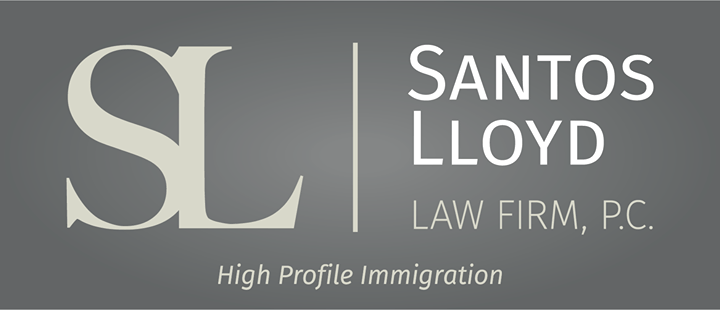Categories
Business
Family
Entertainment
Athletes
All Posts

Once you have connected with a college program, have been admitted to the school, and deemed eligible to compete athletically, you will need to secure an F-1 student visa in order to actually attend your new college and begin your time as a student athlete. The first step in the visa process is to receive your Form I-2

For many talented athletes around the world, U.S. college athletics represent a remarkable opportunity to combine elite athletic competition with higher education. In sports such as basketball, soccer, track and field, and tennis, among others, hundreds of colleges and universities across the United States offer struct

Under the new regulation, if a person filed or files Form I-589, Application for Asylum and for Withholding of Removal after October 1, 2024, and the application remains pending with USCIS for 365 days, the applicant must pay an Annual Asylum Fee (AAF) on the one-year anniversary of his or her filing date.

It’s no secret that the U.S. immigration system has faced increased scrutiny and change in recent months. From evolving policies to headlines filled with uncertainty, it’s understandable that many individuals are left wondering: Is this still the right time to pursue a future in the United States? The answer is yes—and here’s why. Despite the shifting political landscape, the core structure of U.S. immigration law remains firmly in place. While the process may appear more complex or demanding than it once was, the legal pathways to live, work, and thrive in the United States are still open and accessible to those who take the proper steps. What often gets lost in the conversation is that the United States remains a country built on innovation, creativity, and resilience. It continues to attract global talent, entrepreneurs, artists, and professionals from all walks of life. Whether you are launching a business, advancing your career, or seeking a better life for your family, the United States offers unparalleled opportunities to those who are prepared and determined. Much of what makes the United States a global economic and technological leader today is the direct result of contributions made by immigrants. Nearly half of the current Fortune 500 companies were founded by immigrants or their children. Immigrant entrepreneurs have long been an essential part of America’s economic success story. Some of the largest and most recognizable American companies were founded by immigrants or the children of immigrants. This includes household names such as Apple and Costco. Moderna, the pharmaceutical company and vaccine producer, was founded by a Canadian-born stem cell biologist, Derrick J. Rossi, whose parents themselves emigrated from Malta. These success stories are not outliers; they are part of a broader pattern that reflects the drive, innovation, and resilience that immigrants bring to the country. The United States also offers one of the most dynamic and diverse economies in the world. It is a place where hard work, fresh ideas, and entrepreneurial vision are rewarded. For creative professionals, business leaders, and investors, the United States provides a unique platform to grow, connect, and gain global influence. Its competitive marketplace, access to capital, and culture of innovation create unmatched opportunities for those ready to seize them. While the immigration process requires careful planning, that process is far from impossible. Indeed, having strong legal guidance is one of the most effective advantages an applicant can possess. Immigration law is complex, and each case must be evaluated individually. A clear, strategic plan tailored to your background and goals can significantly improve your chances of success. What may feel like a hurdle at first glance is often navigable with solid preparation and documentation. At our immigration law firm, we have had the privilege of assisting individuals from all over the world as they navigate these complexities. Time and again, we have witnessed how determination, careful preparation, and experienced legal counsel can turn uncertainty into opportunity and help transform a vision for the future into reality. If you have been uncertain about whether to move forward, let this be your sign to take the next step. The United States is still a land of possibilities. If you are ready to take that step, now is the time to act. Let us build your path forward together.

For individuals applying under the O-1A or EB-1A categories , both reserved for professionals with extraordinary ability, letters of recommendation are a critical part of the petition. These expert testimonial letters offer valuable insight into your accomplishments, reputation, and influence within your field. When written properly, they help demonstrate that you truly stand out as someone who has risen to the very top of your profession. Many petitions submitted by highly accomplished individuals fall short because the recommendation letters are vague, overly personal, or fail to clearly explain why the applicant meets the legal standard of extraordinary ability. That is why taking the time to prepare your recommenders effectively is not just helpful. It is essential to build a strong and persuasive case. First, it is important to help your recommenders understand the purpose of the letter . This is not a casual reference or character recommendation. It is a formal declaration to U.S. Citizenship and Immigration Services that you possess extraordinary ability in your area of expertise. The letter must describe your achievements in concrete terms and explain why your work has had a significant impact and recognition within your field. Many professionals, no matter how accomplished, are unfamiliar with the specific requirements of the O-1A and EB-1A categories. It is helpful to provide them with a short explanation of what is needed, and in some cases, a sample or outline to guide them. Selecting the right recommenders is just as critical as the content of the letters themselves. While USCIS gives greater weight to letters from independent experts, independence should not be confused with distance. The ideal recommender is someone who knows your work well and can provide specific and credible insight into your contributions, impact, and reputation in the field. A letter from someone who barely knows you, or one that focuses more on the recommender’s own accomplishments than yours, is unlikely to carry much weight with USCIS. A common mistake is submitting letters that read more like summaries of the recommender’s resume than a meaningful evaluation of your achievements. While a brief introduction of the recommender’s qualifications is important to establish credibility, the focus must remain squarely on you , your work, your innovation, and the ways in which your impact is considered extraordinary. The strongest letters go beyond general praise. They include clear and detailed examples of how your contributions have influenced others in your field or led to measurable outcomes. To make the letter as accurate and persuasive as possible, you should provide your recommenders with a summary of your most important professional milestones. This might include major awards, media coverage, patents, publications, notable leadership roles, or metrics showing the commercial or scientific success of your work. Well-prepared recommendation letters serve as both evidence and narrative. They help fulfill specific legal requirements and also tell the story of how and why your work has earned you distinction. In a category defined by terms like extraordinary ability, it is important that every part of your petition reinforces that standard. At Santos Lloyd Law Firm, we work closely with our clients and their recommenders to develop strong and compelling testimonial letters that meet USCIS expectations and highlight each applicant’s unique contributions.

Family-based immigration remains one of the most common paths to lawful permanent residency in the United States. It offers a lifeline to families hoping to reunite across borders, but the process is far from simple. The outcome of the applications can be delayed as a result of potential missteps while preparing the applications. Here are some of the most common pitfalls and how to avoid them: Incomplete or Inaccurate Forms One frequent mistake is submitting incomplete or inaccurate information on the forms like the I-130 (Petition for Alien Relative) and the I-485 (Adjustment of Status). Even minor errors such as misspelled names, missing signatures, or incorrect dates—can result in Requests for Evidence. To avoid this misstep, double-check all entries, cross-reference documents, and consult with an attorney before submission. Remember, immigration forms are legal documents so accuracy matters. Insufficient Supporting Evidence Proving a genuine familial relationship is the basis of family-based petitions. For spousal cases, USCIS looks closely at evidence of a bona fide marriage. Little or no supporting documents and evidence may lead to Requests for Evidence and even skepticism from USCIS. To establish a bona fide marriage, include documentation to show shared finances and liabilities. Filing Under the Wrong Category or Preference There are different immigration paths depending on whether the petitioner is a U.S. citizen or lawful permanent resident, and whether the beneficiary is a spouse, child, sibling, or parent. Each category has different processing times and visa availability. It is critical that before applying, you understand which preference category applies to your case. Immediate relatives of U.S. citizens (spouses, parents, unmarried children under 21) generally receive faster processing and are not subject to annual visa caps. Not Disclosing Past Immigration or Criminal History Many applicants fail to account for past immigration violations such as visa overstays, unauthorized work, or prior removal orders. Similarly, if you fail to disclose past criminal history and these issues surface later in the process they can affect the outcome of the case. Disclose everything to your attorney, no matter how minor or old the issue seems. Prior violations don’t always mean denial but not disclosing them may lead to serious consequences. If you're considering filing a family-based petition, consult with an experienced immigration attorney at our office. Our office is committed to helping families navigate this complex process with clarity and confidence.

When applying for a green card or seeking admission into the United States, one of the legal hurdles many applicants may face is the public charge ground of inadmissibility. This test evaluates whether someone is likely to become primarily dependent on the government for support. But what exactly does that mean—and what types of public benefits can trigger this issue? In this article, we’ll break down what “public charge” really means, who is affected, what types of public benefits are considered, and what immigrants should be mindful of when making decisions about public programs like Medi-Cal and Medicaid. What Is the Public Charge Ground of Inadmissibility? The public charge rule applies to individuals applying for a visa, green card (adjustment of status), or entry into the U.S., unless they fall into an exempt category. Under this rule, the Department of Homeland Security (DHS) must determine whether the applicant is likely to become primarily dependent on the government for subsistence. This typically refers to receiving: Public cash assistance for income maintenance (such as SSI or TANF), or Long-term institutional care at government expense. This determination is based on the "totality of circumstances," including age, health, financial resources, education, skills, and whether a sponsor has submitted a valid Affidavit of Support. Who Is Exempt from the Public Charge Rule? Many categories of immigrants are exempt from the public charge ground of inadmissibility. These include: Asylees and refugees Special immigrant juveniles Violence Against Women Act (VAWA) self-petitioners T and U visa applicants Temporary Protected Status (TPS) applicants Importantly, even if someone later adjusts status through a different pathway that is subject to public charge, any benefits they received while in an exempt category will not be held against them. What Public Benefits Are Not Considered in the Public Charge Test? It is a common and harmful myth that using any public benefit will jeopardize your immigration status. In fact, most non-cash benefits do not count against you in a public charge determination. According to USCIS and DHS guidance, the following types of assistance (current as of July 1, 2025) are not considered: Health-Related Benefits Medi-Cal/Medicaid, except for long-term institutional care Children’s Health Insurance Program (CHIP) Health insurance through the ACA Marketplace, including subsidies COVID-19 testing, vaccines, and treatment Community health services, crisis counseling, and short-term shelters Food and Nutrition SNAP (Food Stamps) WIC School meal programs Food banks and emergency food assistance Housing and Energy Emergency shelter Rental assistance (e.g., McKinney-Vento programs) Energy assistance (e.g., LIHEAP) Education and Childcare Public schooling Head Start Childcare subsidies (e.g., CCDF) Educational grants and scholarships Federal Cash and Tax Benefits Earned income tax credit (EITC) Child Tax Credit (CTC) Stimulus checks Unemployment insurance Social Security and veteran’s benefits Disaster and pandemic-related cash aid In short, just because a benefit is public or government-funded doesn’t automatically make it count against you. A Word of Caution About Medi-Cal and Medicaid, in Particular As of today (07/01/2025), standard use of Medi-Cal (California’s version of Medicaid) or Medicaid for most health-related services is not considered in a public charge determination. This includes preventative care, emergency services, pregnancy-related services, and short-term care. However, if Medicaid is used for long-term institutionalization, such as in a nursing home or psychiatric facility, that does count under the public charge test. Despite current guidance, we are seeing political shifts and changes in tone from the current administration that suggest public charge policies may become more restrictive in the future. This includes renewed interest in expanding the types of public benefits that may be considered, particularly around medical assistance. For that reason, we generally recommend that individuals who are applying for adjustment of status, or who may be subject to the public charge ground in the future, avoid enrolling in Medi-Cal or Medicaid at this time, unless absolutely necessary. Final Thoughts Immigration law is complex, and the rules surrounding public charge can feel confusing or even frightening. But it’s important to understand that using most public benefits—especially for food, education, and healthcare—will not automatically jeopardize your green card or visa application. Still, because policy can change quickly, we urge individuals to consult with an immigration attorney before applying for any public assistance—especially healthcare programs like Medi-Cal or Medicaid. If you have questions or concerns about how public benefits might impact your immigration case, our office is here to help. We are committed to providing up-to-date, personalized guidance to keep your immigration journey on track. Disclaimer The information provided herein is for general informational purposes only and does not constitute legal advice. Every immigration case is unique, and the application of the public charge rule may vary depending on your specific situation. If you believe this topic may apply to you or you need individualized legal guidance, we encourage you to contact one of our highly-qualified legal professionals for a consultation and assistance tailored to your circumstances. Resources: USCIS Public Charge Resources ILRC Medi-Cal and Public Charge Alert (2024) California Medi-Cal Immigrant Eligibility FAQ

As an immigration law firm, we regularly assist highly skilled professionals working in the U.S. on temporary work visas such as H-1B who are seeking a path to permanent residency. For many of these individuals, the EB-2 and EB-3 employment-based green card categories are the most pursued—and frequently misunderstood—routes . While both are viable pathways to permanent residency, they differ in meaningful ways that can significantly impact the timing, eligibility, and overall strategy of your case. The EB-2 category is intended for individuals who either hold an advanced degree or demonstrate exceptional ability in their field . Most applicants qualify by having a master’s degree (or higher), or a bachelor’s degree accompanied by at least five years of progressive experience in their profession. There is also a subcategory within EB-2 known as the National Interest Waiver (NIW), which allows qualified individuals to self-petition without employer sponsorship if their work substantially benefits the United States. This route is especially relevant for researchers, entrepreneurs, and professionals in high national interest or mission-critical fields. In contrast, the EB-3 category includes professionals with a bachelor’s degree as well as skilled workers with at least two years of training or experience . While the educational threshold for EB-3 may appear less rigorous, the process itself is equally structured. One key distinction between EB-2 and EB-3 lies in the requirements of the job being offered, not just the applicant’s own credentials. For example, if a position requires only a bachelor’s degree, even a highly qualified candidate with a master’s degree may still fall under EB-3. Regardless of which category applies, most employment-based green card cases begin with the PERM labor certification process . This is a formal procedure overseen by the U.S. Department of Labor, in which the employer must test the labor market and demonstrate that there are no able, willing, qualified, and available U.S. workers for the position. The employer must also agree to pay the prevailing wage as determined by the Department of Labor. This step is both mandatory and highly detail-sensitive; inaccuracies in the job description, recruitment steps, or wage determination can lead to significant delays or even denials. Once PERM certification is approved, the employer files Form I-140 , the Immigrant Petition for Alien Worker. This petition confirms that the employee meets the requirements for the offered position under either EB-2 or EB-3, and that the employer is financially capable of providing the job as described. If the employee’s priority date—which is based on the date the PERM was filed—is current according to the Department of State’s Visa Bulletin, the individual may then file Form I-485 to adjust their status to lawful permanent resident. One of the more nuanced aspects of this process involves understanding how priority dates and visa backlogs affect the timeline. For applicants from countries with high demand, such as India or China, significant delays are common—particularly under EB-2. Paradoxically, there are times when the EB-3 category moves faster, prompting some applicants to file a second I-140 under EB-3 while retaining the original priority date. This strategy can be effective but requires careful legal planning to ensure it’s done correctly. Another strategic factor is portability. If your I-485 application has been pending for at least 180 days and your I-140 has been approved, you may be eligible to change employers under the AC21 portability provisions, so long as the new job is in the same or a similar occupational classification. This flexibility can be critical for employees who experience job changes or promotions during the often lengthy green card process. Ultimately, the choice between EB-2 and EB-3 isn’t about prestige —it’s about aligning your qualifications, the job requirements, and your immigration history with current legal standards and market conditions. The right strategy depends not only on your education and experience, but also on your long-term career goals and country of origin. At our firm, we work closely with both employers and employees to develop individualized immigration strategies that streamline the process and avoid unnecessary setbacks. Whether you're a corporate professional evaluating your green card options or an employer preparing to sponsor a key team member, we offer the insight and experience to move your case forward with confidence.
Santos Lloyd Law Firm, PC
Email: info@santoslloydlaw.com
Phone: (949) 316-0078
Fax: (949) 271-4500
Office Visits by Appointment Only:
4340 Von Karman Ave, Suite 110
Newport Beach CA, 92660
Phone: (949) 316-0078



